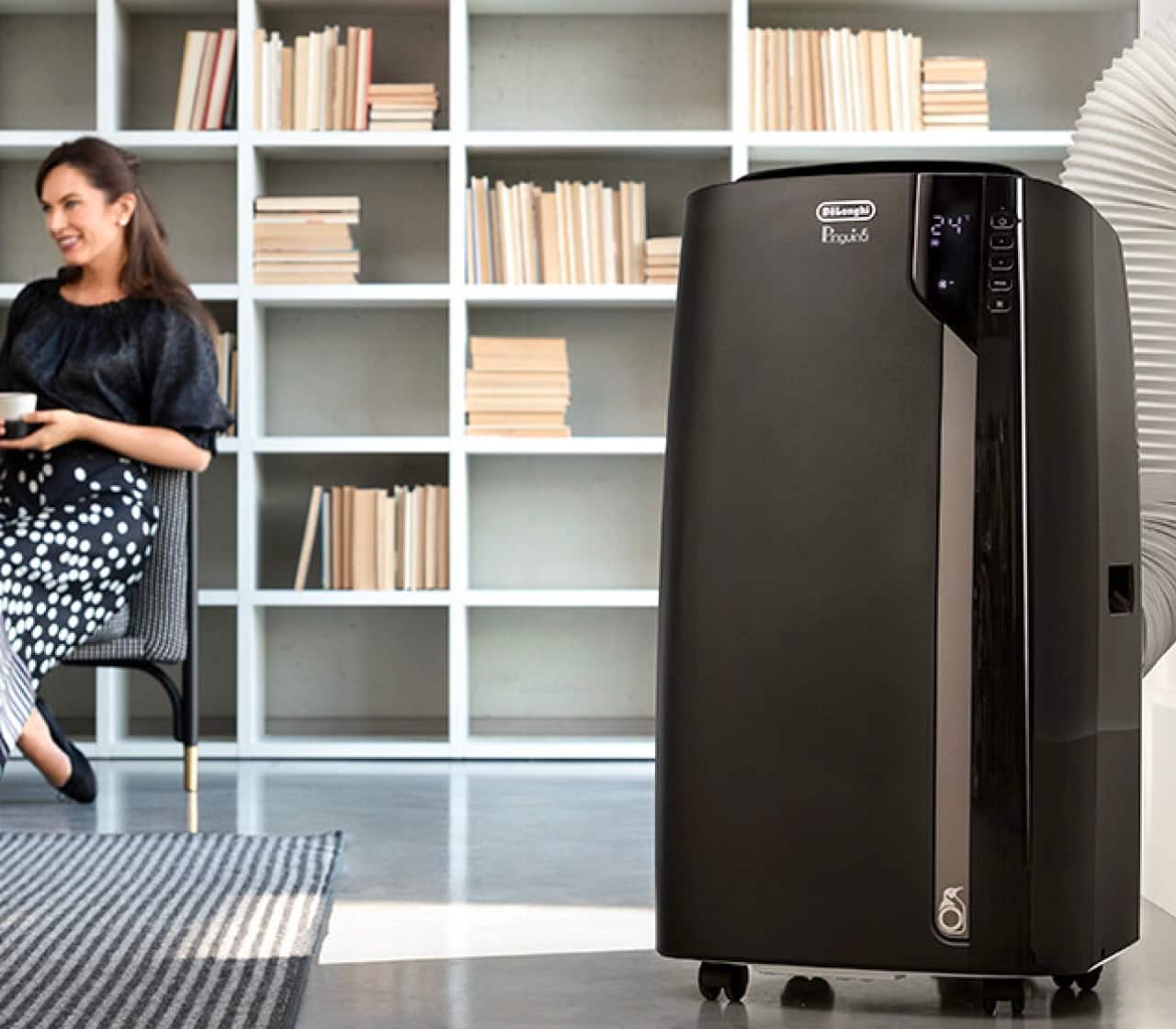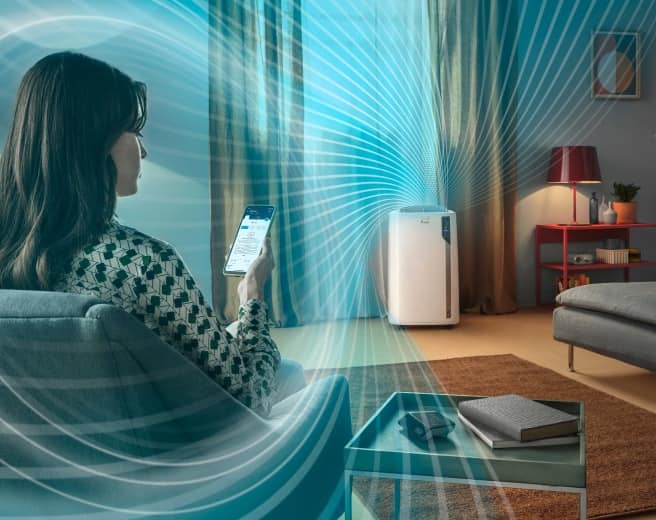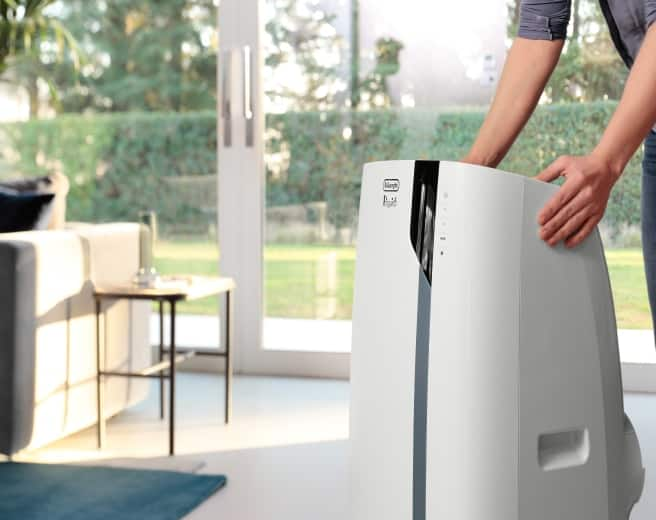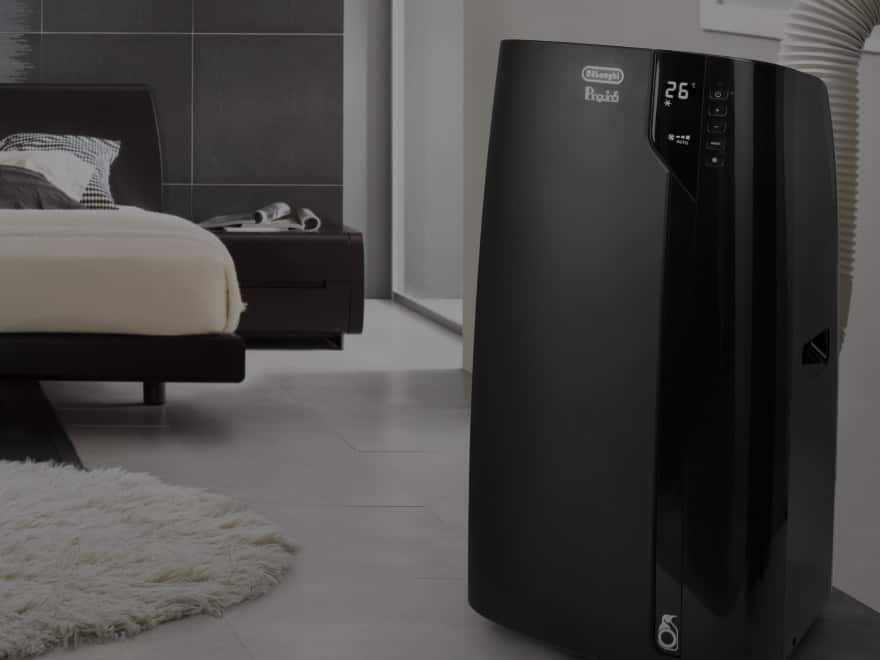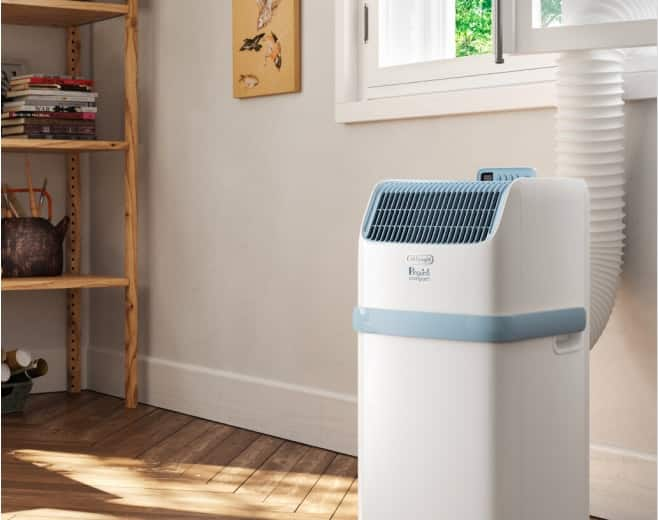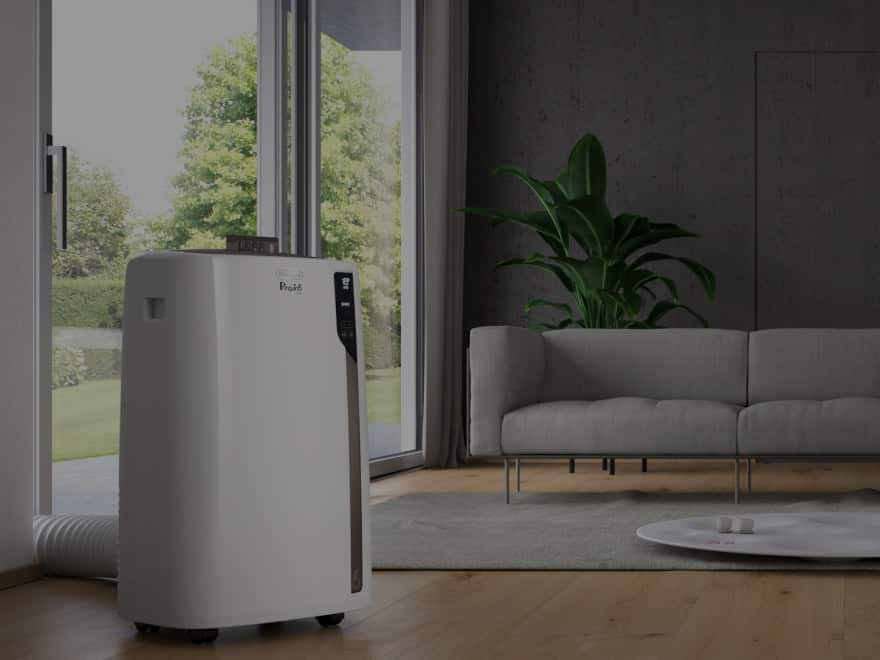
Función de calefacción y deshumidificación
La función de deshumidificación ayuda a eliminar el exceso de humedad del aire, mejorando el confort y reduciendo el riesgo de aparición de moho. Esta función puede utilizarse, por ejemplo, en una habitación muy húmeda o en determinadas épocas del año en las que la humedad es especialmente alta. La función de calefacción, disponible en el PAC EL92HP de De'Longhi, permite que el aparato proporcione calor durante los meses más fríos, convirtiéndolo en un aparato versátil que puede utilizarse durante todo el año.







